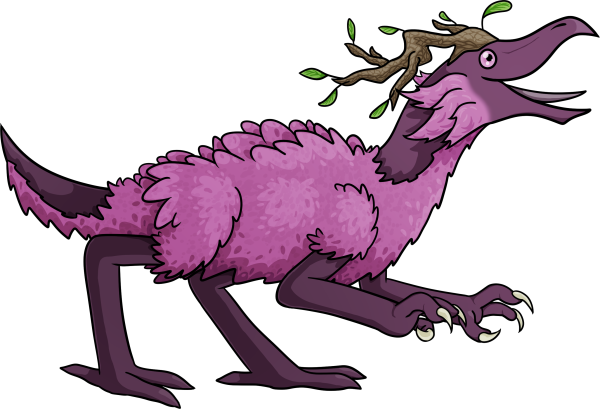Baby Stage Notes
To the untrained eye this looks like a craggy rock, but it’s actually an egg. The lumps on it don’t feel very thick, and could very well be caused by the organism forming inside trying to hatch instead of being a normal part of the shell.
Juvenile Stage Notes
The creature that hatched from the lumpy egg has a beautiful, petal-like coat covering most of its body. Despite appearing avian at a first glance, it has a pair of arms and no visible trace of wings, vestigial or otherwise. It will incessantly peck and pull at whatever is within its reach, usually the end of someone’s coat or some other dangling object that appears enticing. It loves to sunbathe any chance it can get, keeping the branch on its head in the sunlight as much as it can. The claws on its front limbs are very sharp, but only see use if it feels threatened.
Adult Stage Notes
Petalpluckers blend in almost perfectly in the tall flowers that grow in the Perennial Meadow. They are ambush hunters, crouching down and lying in wait for unsuspecting prey to cross their path. When a wild one encounters a researcher, they are more likely to run away instead of attacking. They typically lay their eggs in smaller flower patches that are no good to hunt in. While normally they are solitary, it’s very typical for multiple Petalpluckers to lay their eggs in the same spot.
Despite their appearance, they are unlike some other similarly built species that share the avian and reptilian groupings. They are not part of the reptilian grouping, and are a notable curiosity in regards to the evolution of natural creatures on Chroma. Individuals raised in captivity are much less timid than their wild counterparts, but maintain their solitary nature. They don’t mind being observed for hours on end, but quickly grow tired of physical contact such as being petted and having their coat brushed.

